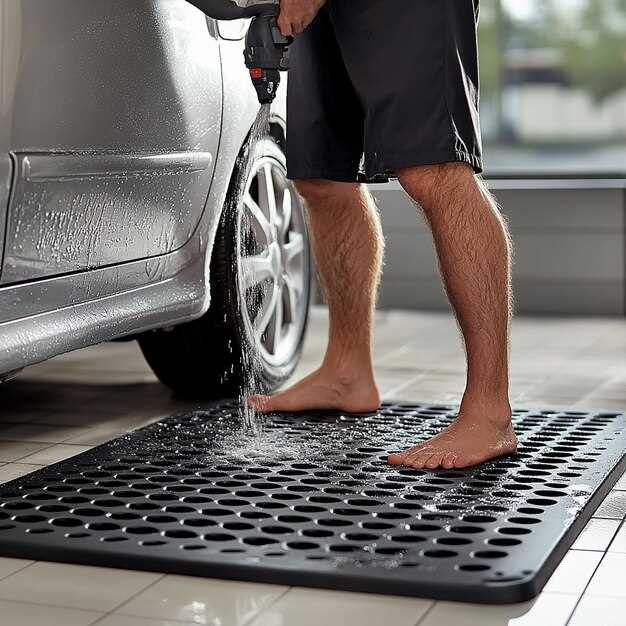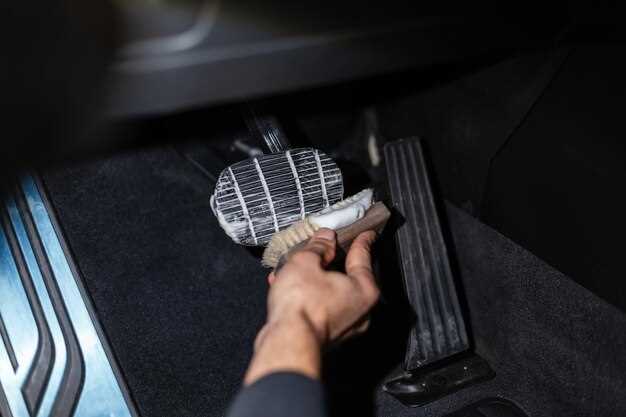

The undercarriage of your vehicle is one of the most critical areas to maintain, especially as winter approaches. Road salt, grime, and other debris can accumulate underneath your car, leading to rust and long-term damage. Proper cleaning and preparation, or prep, of your car’s undercarriage not only extends its lifespan but also ensures safer driving conditions during the colder months.
As temperatures drop and winter weather sets in, it becomes essential to address the unique challenges that come with these conditions. A clean undercarriage can help prevent corrosion caused by the harsh elements typically found on roads during winter. Dedicating time to thoroughly clean this area will pay dividends in performance and durability.
In this article, we will explore effective methods for cleaning your car’s undercarriage, detailing the necessary tools and steps to take for a thorough job. Whether you choose to do it yourself or seek the help of a professional, understanding how to maintain this often-overlooked portion of your vehicle will empower you to keep your car in optimal condition.
Choosing the Right Cleaning Products for Undercarriage Wash
When preparing your vehicle for winter, cleaning the undercarriage is essential to prevent rust and corrosion caused by road salt and debris. Choosing the right cleaning products for this specific task can make a significant difference in the effectiveness of your undercarriage wash.
Start by selecting a degreaser that is safe for automotive use. Look for biodegradable options that can break down oil and grime without harming the environment. Products specifically designed for undercarriages often contain surfactants that help lift dirt and contaminants from tough-to-reach areas.
Next, consider using a rust inhibitor in your cleaning routine. This product helps to protect metal surfaces from oxidation and extends the life of your vehicle’s undercarriage. Apply it after washing to ensure maximum protection against winter conditions.
A high-pressure washer can be beneficial for this process, but ensure you choose a detergent that is appropriate for high-pressure applications. Make sure the product can effectively remove any stubborn deposits while being gentle enough to protect the vehicle’s components.
Finally, always follow the manufacturer’s instructions for dilution and application. Proper use of these cleaning products will enhance your prep work for winter and help maintain a clean and protected undercarriage throughout the harshest seasons.
Step-by-Step Guide to Safe Undercarriage Cleaning

Proper preparation is crucial before starting the undercarriage cleaning process. Begin by gathering all necessary supplies, including a high-pressure washer, a soft brush, a degreaser, and protective gear such as gloves and goggles. Ensure you have ample space and good ventilation to work safely.
Once you’re prepared, lift the car securely using ramps or a hydraulic jack and jack stands. This step is essential for safe access to the undercarriage. After securing the vehicle, inspect the undercarriage for any loose parts or significant corrosion that may require attention before washing.
Next, apply a degreaser to the undercarriage. Starting from the rear, spray the degreaser evenly across all surfaces, focusing on areas with heavy grime buildup. Allow the degreaser to sit for a few minutes to break down the dirt and grease. Avoid applying it to the brake components directly, as this can affect their performance.
After the degreaser has had time to work, use a soft brush to agitate the surfaces. Gently scrub areas with stubborn dirt, being careful not to damage any protective coatings or components. Pay attention to corners and crevices where debris tends to accumulate.
Once you’ve scrubbed the entire undercarriage, rinse thoroughly with a high-pressure washer. Start from the back and work your way to the front, ensuring that all degreaser and dirt are washed away. Be cautious with the pressure; maintain a safe distance to prevent damage to sensitive components.
Finally, inspect the undercarriage after washing to ensure it is cleaned effectively. If necessary, repeat any steps for areas that still appear dirty. After cleaning, allow the undercarriage to dry completely before lowering the vehicle. This step helps prevent rust and corrosion, ensuring your car remains in good condition.
Preventing Rust and Corrosion: Post-Cleaning Maintenance Tips

After thoroughly washing the undercarriage of your vehicle, it’s crucial to take steps to prevent rust and corrosion. Proper preparation and maintenance can significantly extend the life of your car’s components. Here are some effective tips for post-cleaning care:
- Dry Completely: Ensure that the undercarriage is completely dry after washing. Use compressed air or a soft cloth to eliminate any water trapped in hard-to-reach areas.
- Inspect for Damage: Conduct a thorough inspection of the undercarriage for any signs of damage. Look for scratches, dents, or worn-out parts that might expose metal surfaces to moisture.
- Apply Protective Coating: Consider applying a rust-inhibiting spray or undercoating to vulnerable areas. This helps create a barrier against moisture and road salt.
- Sealant Treatment: Use a sealant specifically designed for automotive use. This can prevent water ingress and protect the metal surfaces from corrosion.
- Regular Maintenance Washes: Schedule regular washes for your car’s undercarriage, especially during winter months or after driving on salted roads. Consistent cleaning can reduce the buildup of harmful substances.
- Monitor Drainage Points: Ensure that drainage points in the undercarriage are clear of debris. Blocked drainage can lead to water pooling and eventually cause rust.
- Environmental Considerations: If you live in a coastal area or frequently drive in wet conditions, take extra precautions. Store your vehicle in a garage when possible to minimize exposure to moisture.
Implementing these maintenance tips after cleaning the undercarriage will help safeguard your vehicle against rust and corrosion, ensuring its longevity and performance.







